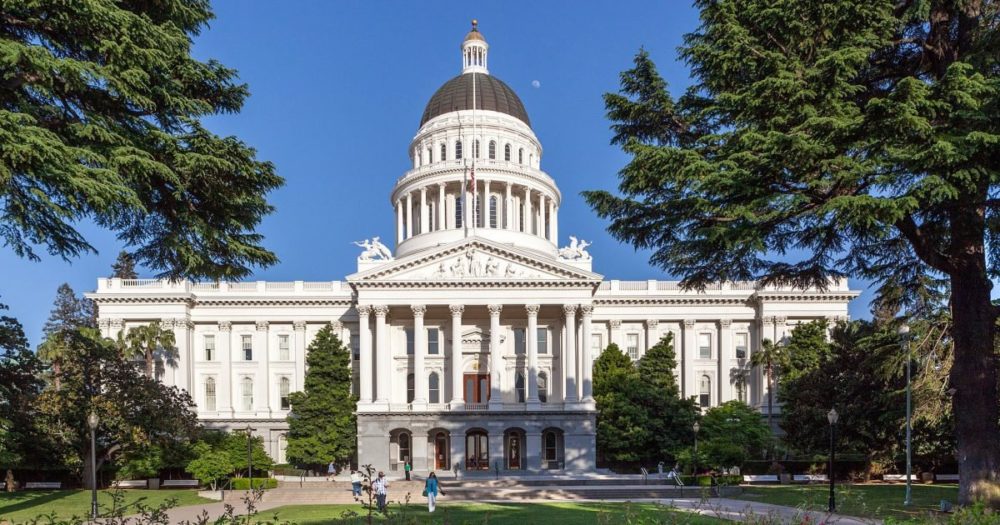Next month, the California Air Resources Board (CARB) is considering amendments to extend and strengthen the state’s pioneering Low Carbon Fuels Standard (LCFS). The LCFS works in concert with other climate and vehicle policies to cut oil use and transportation emissions by promoting the use of cleaner transportation fuels ranging from biofuels to renewable electricity.
CARB staff’s proposal to the board would extend the policy to 2030 and double the emissions reduction target from a 10 percent reduction in average fuel carbon intensity in 2020 to a 20 percent reduction in 2030. CARB is also increasing opportunities for renewable electricity and adopting rules to account for carbon capture and storage (CCS) used in the production of transportation fuels.
What is a Low Carbon Fuels Standard?
The LCFS was established in 2009 to provide a steadily growing market for cleaner transportation fuels. The program regulates the “carbon intensity” (i.e., the amount of global warming emissions per unit of energy output) of fuels, taking into account the emissions generated over each fuel’s life cycle, from extraction and production to delivery and use. Under the LCFS, petroleum refineries and fuel importers must gradually reduce the average carbon intensity of the fuels they sell, according to a schedule that currently requires a 10 percent reduction in 2020 relative to 2010. To comply with the law, petroleum refiners and importers can either blend low carbon fuels into the fuel they sell, buy credits generated by low-carbon fuel producers and users, or both. In 2016, the largest sources of clean fuel credits were ethanol, renewable diesel, biodiesel, electricity, and biomethane.
What is CARB proposing to change?
In the amendments proposed by CARB staff earlier this week, the 10 percent target for 2020 is replaced by a 20 percent target for 2030. CARB also proposes adjustments to the schedule for 2019 and 2020 so that requirements for low carbon fuels grow at a steady rate between now and 2030. This is a change compared to earlier discussion of the LCFS extension in the scoping plan, which had not proposed any schedule changes prior to 2020 and had proposed an 18 percent target for 2030.

The new schedule strengthens the program in several ways.
- A 20 percent target for 2030 will deliver more support for low carbon fuels over the long term than either the current 10 percent standard or the previously proposed 18 percent standard.
- The proposed schedule grows steadily and predictably at 1.25 percent a year, while the earlier proposals had stringency that increased rapidly from 2018 to 2020, was frozen in place from 2020 to 2022, and then grew 1 percent a year thereafter.
The proposal is simpler and more predictable, and sends a clear message to the market for low carbon fuels that demand will grow steadily over the long term. CARB’s analysis shows that the proposed standard is readily achievable, and in the coming weeks we will share some additional analysis, which suggests that even more ambitious targets are feasible.
The growing importance of electricity as a transportation fuel
It’s been clear for a while that powering cars with electricity is cleaner and cheaper than using gasoline, and our latest analyses shows this trend is accelerating. EVs in California emit as much carbon pollution on full lifecycle basis as a gasoline car getting more than 100 miles per gallon, and save EV drivers from $571 to $1077 per year in fuel costs, depending on where they charge.

Photo: RedBoy [Matt]/Creative Commons (Flickr)
As more EVs hit the road, electricity is playing an increasingly important role in the LCFS. Our recent fact sheet, California’s Clean Fuel Standard Boosts The Electric Vehicle Market, explains the how the LCFS is making EVs more cost effective not just for private car drivers, but also for transit agencies and others.
Electricity used by cars, trucks, rail lines, and even forklifts comprised a growing share of the emissions reductions credited under the LCFS, rising from less than 1 percent in 2011 to 10 percent in 2016. These emissions reductions create value, about $92 million in 2016, which is helping to accelerate the transition to electric drive. Thanks to LCFS EV credits, utilities are giving rebates or level 2 chargers to their customers that own an EV. And LCFS credits are also helping public transit fleets go electric. At credit values of $100 per metric ton of emissions avoided, transit agencies earn about $9,000 per year for each electric bus in their fleets.
The LCFS amendments include more flexible provisions to recognize EVs that charge up with renewable power. Electric vehicles charged with renewable power are among the cleanest ways to get around, and its important to recognize this potential and support it within the LCFS. In the next decade we will see EVs move into new roles, including some high mileage applications like hauling freight and providing autonomous taxi rides. Because LCFS credit generation is directly tied to the quantity of low carbon fuel use, electric vehicles that drive the most miles and displace the most fuel generate the most credits. The LCFS is poised to play an even more important role accelerating the electrification of the transportation system in years to come.
Carbon capture and storage creates big opportunities to clean up many fuels
CARB is also proposing a new protocol to account for Carbon Capture and Sequestration (CCS) within the LCFS. CCS is often discussed in the context of reducing emissions from fossil fuel fired power plants, but transportation fuel producers have some unique opportunities to capture and sequester carbon as well. One of the most advanced CCS facilities in America is actually operating at a corn ethanol plant in Illinois. Ethanol production is a natural candidate for carbon capture because the fermentation process used to convert corn to ethanol releases nearly pure carbon dioxide, which can be captured without the complex and energy intensive process required to separate a dilute stream of carbon dioxide from other exhaust gasses at power plants. Also, many ethanol plants are located near geological formations well suited to sequestering carbon. But ethanol producers are not the only fuel producers who could sequester carbon. Oil refiners or companies that extract oil also have opportunities to integrate CCS into their operations.

Photo: Archer Daniels Midland
Accounting for the carbon benefits of CCS is complex. CARB’s rules will clarify what must be done to ensure the permanence of the storage, and to account for energy and emissions associated with the CCS process. Getting this right is complicated and important. As if often the case, CARB’s work will advance the state of practice for regulators around the world. This is even more important now that the U.S. Environmental Protection Agency is hamstrung by its administrator.
The CCS provisions in the LCFS are a concrete means of holding fuel producers accountable for the emissions from their supply chains, and they also make the LCFS more flexible. If an oil refinery implements CCS, it can reduce the emissions associated with its fuel production within its own facility, helping meet its own obligations under the LCFS instead of relying solely on other parties to produce cleaner fuel. When a corn ethanol facility implements CCS, it can produce more climate benefit from the same fuel it produces today. This gives the cleanest ethanol producers a chance to generate more credits and make more money without expanding the amount of corn used to make ethanol, thus avoiding increases in emissions associated with farming or land use.
CARB’s CCS protocol and rules create a powerful incentive for biofuel producers, oil refineries, and other fuel producers to capture and sequester carbon dioxide that is currently released into the atmosphere. A recent change in federal tax policy makes CCS projects even more attractive, offering a tax credit of $50 per ton of carbon dioxide sequestered. Together, these policies may jump start commercial deployment of CCS.
A flexible policy that gets better over time
The flexibility of the LCFS is one of its key strengths. As I described in my recent report, Fueling a Clean Transportation Future, all of our transportation fuels can get cleaner if fuel producers are held accountable to reduce their emissions. Looking into the future, it’s impossible to know what mix of low carbon biofuels, vehicle electrification, CCS or other strategies to cut emissions from fuel production will progress most rapidly. But by setting steadily growing long term goals, the LCFS supports innovation and progress across the transportation fuel sector. By adopting these amendments, extending the LCFS to 2030 and doubling the emissions reduction targets, the California Air Resources Board will be speeding California on its way to a clean transportation future.

